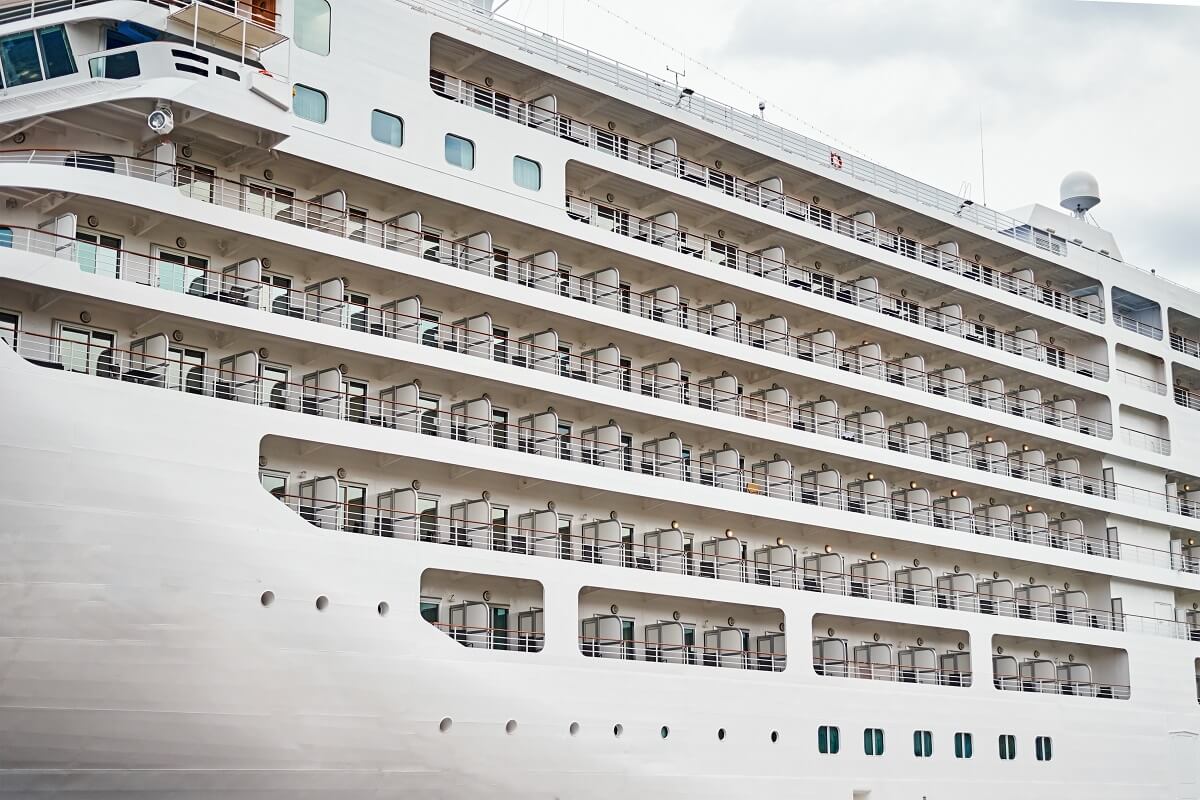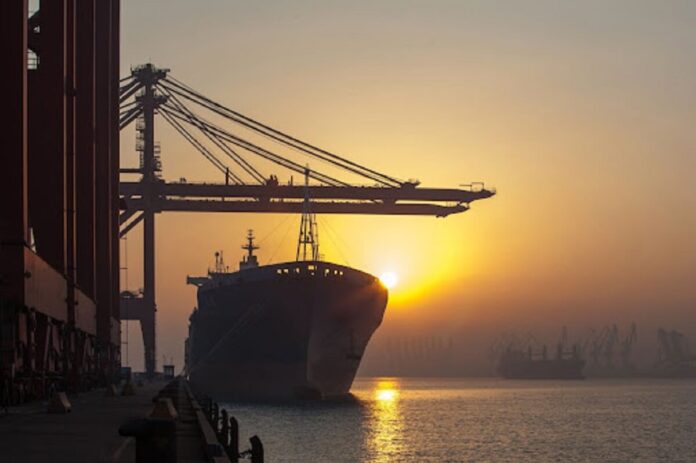When you think of a ship, you probably imagine yourself on an enormous cruiser traveling to a faraway land. However, ships are used for much more than just transporting passengers.
Ships are vessels larger than boats used for carrying people and goods by water. There are numerous types of ships based on what they are used for and what they carry. For example, cruisers are ships that carry travelers, and tanker ships are vessels that carry liquified cargo.
There are also ships used for military purposes and ones that serve only for fishing. Since the list of all types of ships would be too long, here’s a list of the most common types of ships to help you understand these fascinating machines a bit better.
Where Are Ships Made?
Ships are built, maintained, and repaired at shipyards, with the biggest shipyard in the world being located in Ulsan, South Korea. However, shipyards are primarily associated with shipbuilding, while dockyards serve more for maintenance.
South Korea, China, and Japan have conquered world shipbuilding by gross tonnage, supplying most of the global market for the bulk carrier, container, and tanker ships. However, Italy, Finland, France, and Germany are top shipbuilders when it comes to passenger ships, such as cruise ships.
Below, you can discover other common types of ships that the global industry as we know it couldn’t function without.
1. Passenger Ships
Passenger ships refer to merchant ships that are typically used for transporting voyagers or passengers on international or national travels. They can be as big as cruise ships and as small as yachts. That said, if a ship can carry at least 12 passengers, it falls under the passenger ship category.
Passenger ships must adhere to sea travel and inland water regulations to prevent maritime disasters that may occur.
These ships have two main types:
- Cruise ships: Cruise ships are typically used for leisure trips, with most of them traveling to chosen tourist spots worldwide. These ships compete with each other by providing quality entertainment and accommodation, as well as food and drinks.
- Ferries: Ferries are used for the transportation of passengers on short distances, such as from the land to the nearby island.
2. Container Ships

Container ships are ships constructed specifically to carry large quantities of cargo packed in various types of containers that are arranged on the ship’s deck. They can move more than a thousand containers in just one trip. Some container vessels have only one deck. Those that have more than one are called multi-decks.
Container ships are vital for international trade because they move various items, such as metals, machinery, furniture, food, clothes, etc. They move around 90% of the non-bulk cargo in the world. Moreover, the containers have standard sizes so they can easily transfer to different transport modes, including trains and trucks.
3. Tanker Ships
Tanker ships are vessels that carry large quantities of liquefied freight, including oil, alcoholic beverages, chemicals, hydrogen-based compounds, and juices, to name a few. They come in various sizes and use cutting-edge technologies. Note that different tanker ships move different types of liquified cargo. That said, there are different types of tanker ships:
- Oil tanker ships: These tanker ships carry oil.
- Liquefied gas tanker ships: These ships transport liquefied gas, such as LPG and LNG.
- Chemical and product ships: As the name suggests, these carriers move liquid chemicals.
- Other tanker ships: Other tanker ships carry juices, wines, and other similar commodities.
Read Also: Tutflix.org? Yeah, Free Community to Develop Your Skills Online
4. Naval Ships
Naval ships are designed for military service, and that’s why they are built differently from those for civilian use. Typically, naval ships contain different weapon systems and are constructed using more robust materials to withstand damage from outside factors.
Warships are made specifically for naval warfare, while auxiliary ships are made for support functions. They are typically used for shipyard operations and rarely for armament and troop transport.
5. Bulk Carriers

These ships transport cargo in bulk quantities. The cargo they carry includes loose cargo like grains, coals, ores, or cement. Besides dry cargo, bulk carriers can also transport liquefied freight, such as petrol, oil, and other liquid chemical compounds. They can be categorized into several types:
- Conventional bulker
- Self-discharging bulker
- Lakers
- Gearless bulker
- Geared bulker
- BIBO
6. Offshore Ships
Offshore ships are vessels used in the exploration of oil, but they can also serve for the transportation of people and goods for construction projects in oceans. These also come in different sub-types:
- Drillships: These are used in exploratory drilling offshore. Typically, scientists and geologists are aboard drillships.
- Semi-submersible drill rigs: These vessels are mobile drilling machines that make stable and strong platforms for gas and oil drilling operations.
- Supply ships: These ships supply materials and other goods to offshore rigs.
- Driving ships: These vessels are used by drivers while completing their tasks underwater.
- Floating production storage and offloading ships: These ships serve primarily as storage units, but some are also used for the production and processing of hydrocarbons.
- Floating storage unit vessels: These ships are used only for storing oil, as well as its by-products.
- Pipelayers: Pipelayers are used by cable and pipe workers to lay cables and pipes underwater.
- Accommodation barges: These vessels accommodate cargo and people and can be used as floating hotels.
- Anchor handling ships: These ships are built for the transportation of employees of enterprises that are building and installing sea-based projects.
- Crane barges: These vessels feature large cranes built to lift heavy loads.
- Production platforms: These vessels are used when extracting and processing natural oil and gas. However, they can also serve as temporary storage units until gas and oil can be moved to shore.
7. Fishing Vessels
Fishing ships are primarily used for fishing and catching other sea wildlife. Besides commercial fishing, they are also used for leisure purposes.
8. Dredgers
Dredgers are ships that feature devices to suck or scrap the sediment deposition over an ocean bed. They are vital because they ensure the bottom clearance is safe for travel. While dredging can damage the marine environment, sometimes it’s necessary.
There are two main types of dredgers:
- Mechanical dredgers: These dredgers are used for work in confined areas. They are valuable when removing hand-packed debris or material.
- Hydraulic dredgers: They work by adding huge amounts of processed water to alter the sediments’ initial structure.
Ships Are More than Transportation

While reading this article, you got to know different types of ships a bit better. As you can see, there are many types of ships based on what they carry and how they function. And they aren’t used just for transporting people and goods.
Cruise ships are also used for entertainment purposes, while some ships act as floating hotels. Others extract and store oil or freeze and process fish. That said, ships are amazing machines that can offer a lot more than just mere transportation.









